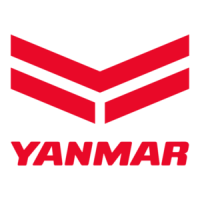2
CHAPTER
ONE
)
5. When replacing a fastener, make sure to use one with
the same measurements and strength as the old one. Incor-
rect or mismatched fasteners can result in damage to the
engine and possible personal
injury. Beware
of
fastener
kits that are filled with poorly made nuts, bolts, washers
and cotter pins. Refer to
Fasteners in this chapter for addi-
ti
ona
l informa tion.
6. Keep all hand and power tools in good condition. Wipe
greasy and oily too ls after using them. They are difficult
to hold and can cause injury. Replace or repair worn or
damaged tools .
7. Keep the work area clean and uncluttered.
8. Wear safety goggles (Fi g
ure
1) during all operations
involving drilling, grinding, the use
of
a cold chisel or any
time the safety
of
the eyes is compromised. Safety gog-
gles should be worn when using solvent and compressed
air.
9. Keep an approved fire extinguisher nearby (Figure 2).
Make sure
it is rated for gasoline (Class B) and electrical
(Class
C) fires.
10. When drying bearings or other rotating parts with
compressed air, never allow the air
jet
10 rotate the bearing
or part. The air
jet
is capable
of
rotating them at speeds far
NOTES,
CAUTIONS
AND WARNINGS
cusses the tools and techniques for preventive f7"\
maintenance, troub leshooting and repair. 0
Chapter Two provides methods and suggestions for
quick and accurate problem diagnosis and repair. Troub le-
shooting procedures discuss typical symptoms and logical
methods to pinpoint the trouble.
Chapter Three explains all
per
iodic lubrication and rou-
tine maintenance necessary to keep the engine operating
well. Chapter Three also includes recommended tune-up
procedures, eliminating the need to constantly consult
other chapters on the various assemblies.
Subsequent chapters describe specific systems, provid-
ing disassembly, repair, assembly and adjustment proce-
f:\2
dures in simple step-by-step fonn.
If
a repair is
\.V
impractical for a home mechanic, it is so indicated. It is
usually faster and less expensive to take such repairs to a
dealer or repa ir shop. Spec ifications concerning a specific
system are included at the end of the appropriate chapter.
SA
FE
TY
FIRST
The terms NOTE, CAUTION and WARNING have
specific meanings in this manual. A NOTE provides addi-
tional information to make a step or procedure easier or
clearer. Disregarding a NOTE could cause inconvenience
but would not cause damage or personal
injury.
A CAUTION emphasizes areas where equipment dam-
age could occur. Disregarding a
CAUT
ION could cause
permanent mechanical damage; however, personal injury
is unlikely.
A WARNING emphasizes areas where personal in
jury
or even death could result from negligence. Mechanical
damage may also
occur
. WARNINGS are to be taken seri-
ously.
In some cases, serious injury or death has resulted
from disregarding similar warnings.
Professional mechanics can work for years and never
sustain a serious injury. By observing a few rules of com-
mon
sense and safety, it is poss ible to enjoy many safe
hours servicing the machine. Ignoring these rules can
cause injury or damage to equipment.
I. Never use gasoline as a cleaning solvent.
2. Never smoke or use a torch in the vicinity
of
flamma-
ble liquids, such as cleaning solvent, in open containers.
3. Use prope r sized wrenches to avoid damage to fasten-
ers and personal injury.
4. When loosening a tight or stuck nut, remember what
could happen if the wrench should slip. Be careful; protect
yourself
accordingly.

